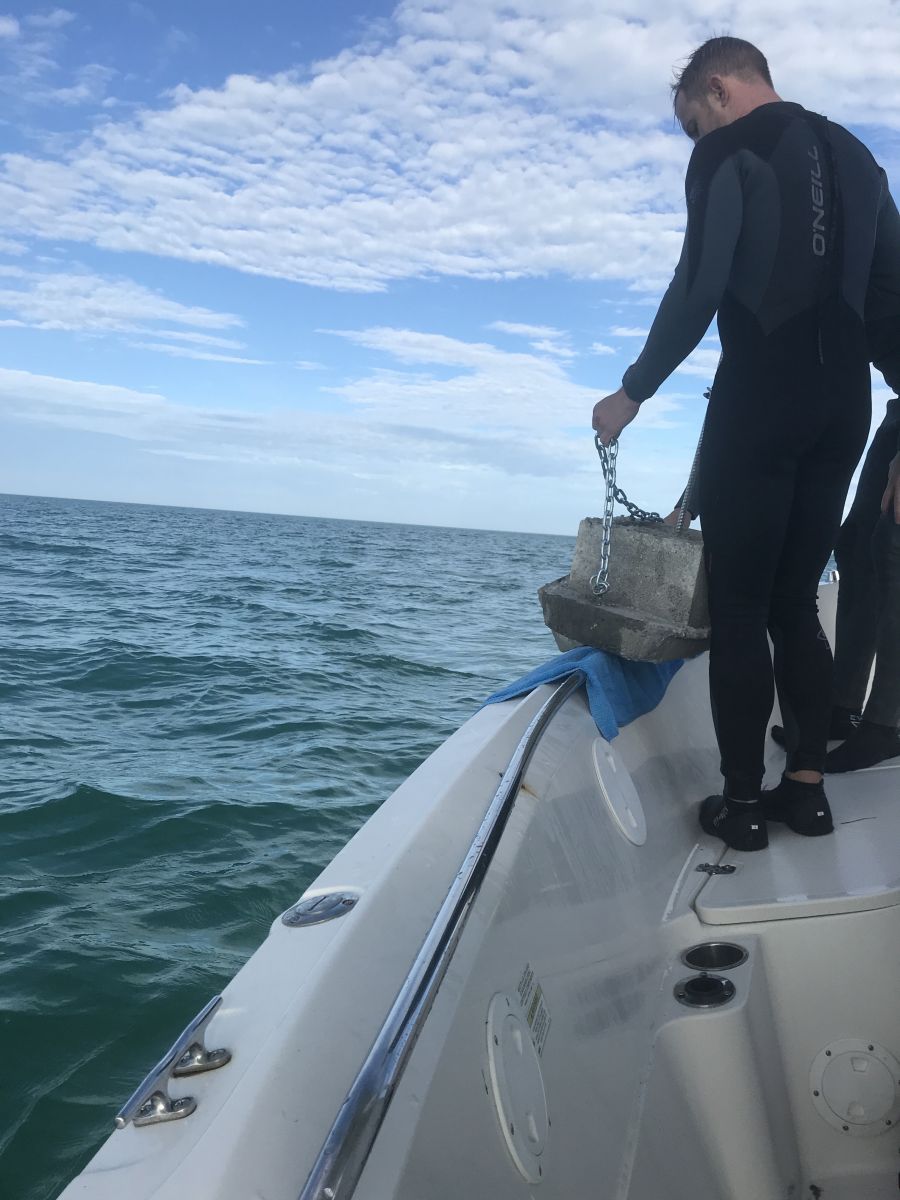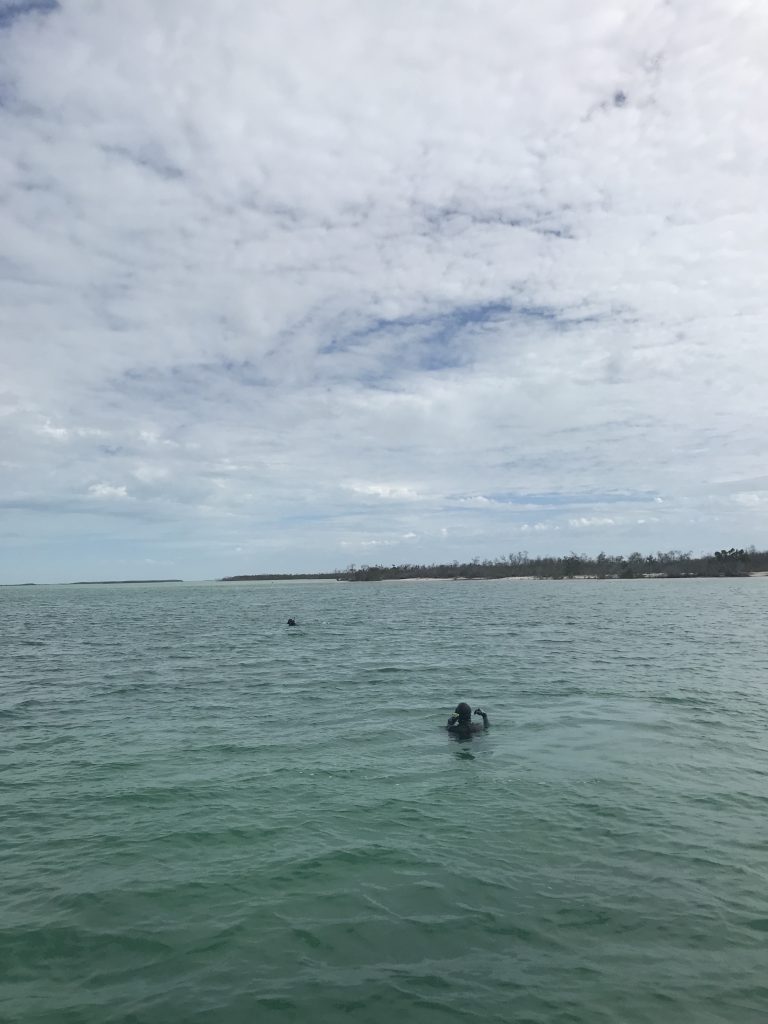Last Monday, two members of the BTT science team – Lucas Griffin and Jacob Brownscombe – traveled to the Florida Keys to help locate underwater receivers used in our acoustic telemetry research. Current projects that utilize acoustic telemetry, including the Bahamas Initiative, Costa’s Project Permit and the Tarpon Acoustic Tagging Project, rely on receivers, or “listening stations,” to record unique tag information whenever a tagged fish swims within range.
Why are scientists trying to find receivers? Aren’t they supposed to stay where they were deployed?

The simple answer is yes. These receivers are attached to heavy concrete moorings, each weighing about 60 pounds. When Griffin and Brownscombe deploy a receiver, they secure it to a heavy cement block, designed to resist wind and wave action, and mark its location on a GPS unit. They are then able to revisit the location when it is time to download the tagging data from the receiver itself.
Out of the 80 receivers deployed in the Florida Keys area, nearly all were either buried under sandbanks or moved from its original location by Hurricane Irma. Over the past three weeks, these scientists have been following the marked locations to search the area for receivers that were hidden or moved by the currents, waves, and surge resulting from the hurricane. Some receivers were either drastically moved or so deeply buried that the scientists were unable to find them—even with the help of GPS and scuba gear.
Jacob Brownscombe, Ph.D., of Canada’s Carleton University, had this to say about Irma’s impact on the progress of BTT projects involving acoustic telemetry:
Irma has definitely altered the nearshore flats of the Florida Keys. On the positive side, much of the algae, which has been building on the seagrass flats, was washed away. However, significant sandbanks were also deposited on regions of the reef on the edge of the Gulf of Mexico, along with changes in general bathymetry of the flats. This has caused us issues with finding some of our receivers, which were buried by sediment. It will be interesting to see how fish movement patterns change in relation to changes in bathymetry and habitat type – which we can observe with our telemetry system.
The good news is that of the 80 receivers in the Florida Keys, only 20 were lost. Overall, not too bad given the severity of Hurricane Irma. We are already in the process of restocking our supply of receivers, and will be quickly replacing those lost in the storm. Griffin and Brownscombe have begun deploying new moorings over twice the original weight—over 140 pounds! The next step will be to download the data from the remaining receivers to determine whether they detected fish since Irma. Stay tuned for more updates.




